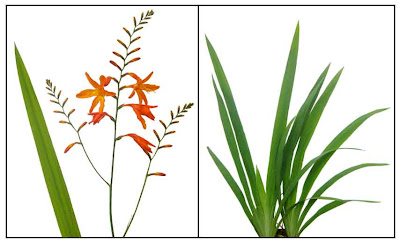Uses
Edibility
Mesocarp of the fruit is sweetish, sometimes eaten by children.Folkloric
· In the Philippines, a decoction of the inner bark or fresh cambium and leaves is used to treat diarrhea.
· Acute bacillary dysentery, enteritis, diarrhea: use 15 to 30 gms dried material in decoction.
· Also for colds, sore throat, headache.
· A decoction of the inner bark or fresh cambium and leaves is used to treat diarrhea.
· Anaphylactic dermatitis, eczema, skin pruritus: use decoction of fresh material and apply as external wash.
· Latex used as gum arabic for gluing.
· In Venezuela, rain tree is a traditional remedy for colds, diarrhea, headache, intestinal ailments and stomach ache.
· Root decoction used in hot baths for stomach cancer.
· In the West Indies, the leaf infusion is used as a laxative and seeds chewed for sore throat.
· The alcoholic extract of leaves used for tuberculosis.
· In Columbia, the fruit decoction is used as a sedative.Others
- Wood: Valued for its shade. Popularly used in carving, making tables, wood basins and bowls. Hats are made from the shavings of the wood.
- Fodder: Seasonally copious pods with sweet pulp that can be grounded and converted to fodder and alcohol as an energy source. It is also an important honey plant like most mimosaceous trees
Mesocarp of the fruit is sweetish, sometimes eaten by children.Folkloric
· In the Philippines, a decoction of the inner bark or fresh cambium and leaves is used to treat diarrhea.
· Acute bacillary dysentery, enteritis, diarrhea: use 15 to 30 gms dried material in decoction.
· Also for colds, sore throat, headache.
· A decoction of the inner bark or fresh cambium and leaves is used to treat diarrhea.
· Anaphylactic dermatitis, eczema, skin pruritus: use decoction of fresh material and apply as external wash.
· Latex used as gum arabic for gluing.
· In Venezuela, rain tree is a traditional remedy for colds, diarrhea, headache, intestinal ailments and stomach ache.
· Root decoction used in hot baths for stomach cancer.
· In the West Indies, the leaf infusion is used as a laxative and seeds chewed for sore throat.
· The alcoholic extract of leaves used for tuberculosis.
· In Columbia, the fruit decoction is used as a sedative.Others
- Wood: Valued for its shade. Popularly used in carving, making tables, wood basins and bowls. Hats are made from the shavings of the wood.
- Fodder: Seasonally copious pods with sweet pulp that can be grounded and converted to fodder and alcohol as an energy source. It is also an important honey plant like most mimosaceous trees
• Studies have suggested antimycobacterial antimicrobial activity in the crude extracts of acacia.
• Preliminary phytochemical screening and antimicrobial activity of Samanea saman: A study of the aqueous plant extract on three organisms (Escherichia coli, Staphylococcus aureus and Candida albicans) showed inhibitory activity against all the tested organisms. Phytochemical screening revealed tannins, flavanoids, saponins, steroids, cardiac glycosides and terpenoids. The study validates the use of the plant in traditional medicine.
• Antibacterial: A methanol extract from leaves showed a highly significant antibacterial activity in vitro for Xanthomonas pathovars and for human pathogenic bacteria.
• Larvicidal: Of 112 medicinal plant species collected in Thailand, Samanea saman (stem bark) was one of 14 plants that exhibited high toxicity to the fourth instar larvae of Aedes aegypti in preliminary screening.
• Antioxidant: Several extracts of Samanea saman showed the highest antioxidant potential in both DPPH and reducing power assay.
• Anti-Termite: Study of ethanolic extracts of seeds and bark of Acacia collected from the Laurel Farm in Lipa city yielded saponins, tannins, alkaloids, reducing agents - glycosides, carbohydrates. Results showed termite killing activity comparable to solignum.
DescriptionAcacia is a large umbraculiform tree growing to a height of 20 to 25 meters. Bark is rough and furrowed. Branches are widespread. Leaves are evenly bipinnate and hairy underneath. Pinnae are 8 to 12 and 15 centimeters long or less. Leaflets are 12 to 16 in the upper pinnae, 6 to 10 in the lower ones, decreasing in size downward, hairy beneath, with the mid-nerve diagonal, and oblong-rhomboid, 1.5 to 4 centimeters long. Flowers are pink, borne in dense, peduncled, axillary, solitary, fascicled heads. Fruits are pods, straight, somewhat fleshy, indehiscent, 15 to 20 centimeters long, 2 centimeters wide, with a pulpy sweet mesocarp.





